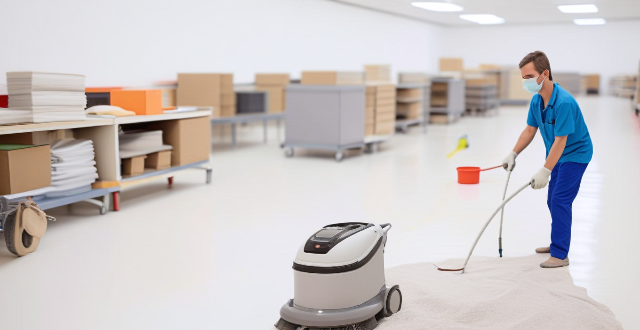Best practices for cleaning and sanitizing reusable PPE include removing visible contamination, cleaning the equipment with a suitable agent, and sanitizing it using chemical disinfection, heat sterilization, or UV radiation. Hand washing or machine washing can be used for cleaning, while chemical disinfection involves immersing the PPE in a disinfectant solution, heat sterilization uses high temperatures to kill microorganisms, and UV radiation uses ultraviolet light for the same purpose. It is important to follow the manufacturer's instructions and ensure that the PPE is stored in a clean, dry location until ready for use.

Best Practices for Cleaning and Sanitizing Reusable PPE
Introduction
Personal Protective Equipment (PPE) is essential for healthcare workers and other individuals who are at risk of exposure to infectious diseases. Reusable PPE, such as face shields, gowns, and respirators, must be cleaned and sanitized properly to ensure their effectiveness and safety. In this article, we will discuss the best practices for cleaning and sanitizing reusable PPE.
Step 1: Remove Contamination
Before cleaning and sanitizing reusable PPE, it is important to remove any visible contamination or debris from the surface of the equipment. This can be done by wiping down the surface with a disposable towel or cloth that has been moistened with water or a mild detergent solution.
Step 2: Clean the Equipment
After removing any visible contamination, the next step is to clean the equipment thoroughly using a suitable cleaning agent. The type of cleaning agent used will depend on the material of the PPE and the manufacturer's instructions. Generally, a mild detergent or enzymatic cleaner can be used for most types of reusable PPE.
Step 2a: Hand Washing
Hand washing is an effective method for cleaning reusable PPE, especially if the equipment is not too dirty. To hand wash the equipment, follow these steps:
- Fill a basin or sink with warm water and add a small amount of mild detergent or enzymatic cleaner.
- Immerse the PPE in the water and gently scrub all surfaces with a soft brush or sponge.
- Rinse the equipment thoroughly with clean water to remove any residual soap or cleaner.
- Hang the PPE up to air dry in a well-ventilated area away from direct sunlight.
Step 2b: Machine Washing
Machine washing is another option for cleaning reusable PPE, but it should only be used if the manufacturer's instructions allow for it. To machine wash the equipment, follow these steps:
- Check the manufacturer's instructions to determine the appropriate settings and cycle for washing the PPE.
- Place the PPE in a mesh laundry bag to prevent damage during washing.
- Use a mild detergent or enzymatic cleaner and set the machine to a gentle cycle with cold water.
- Hang the PPE up to air dry in a well-ventilated area away from direct sunlight.
Step 3: Sanitize the Equipment
Sanitizing the equipment is crucial to kill any remaining bacteria or viruses that may be present on the surface of the PPE. There are several methods for sanitizing reusable PPE, including chemical disinfection, heat sterilization, and UV radiation.
Step 3a: Chemical Disinfection
Chemical disinfection involves using a disinfectant solution to kill microorganisms on the surface of the PPE. The type of disinfectant used will depend on the material of the PPE and the manufacturer's instructions. Some common disinfectants include alcohol solutions, hydrogen peroxide, and quaternary ammonium compounds. To use chemical disinfection, follow these steps:
- Prepare a disinfectant solution according to the manufacturer's instructions.
- Immerse the PPE in the solution for the recommended contact time.
- Rinse the equipment thoroughly with clean water to remove any residual disinfectant.
- Hang the PPE up to air dry in a well-ventilated area away from direct sunlight.
Step 3b: Heat Sterilization
Heat sterilization involves using high temperatures to kill microorganisms on the surface of the PPE. This method is typically used for reusable face shields and respirators made of heat-resistant materials. To use heat sterilization, follow these steps:
- Check the manufacturer's instructions to determine the appropriate temperature and duration for sterilizing the PPE.
- Place the PPE in a preheated oven or autoclave according to the manufacturer's instructions.
- Allow the PPE to cool completely before handling it.
- Store the PPE in a clean, dry location until ready for use.
Step 3c: UV Radiation
UV radiation involves using ultraviolet light to kill microorganisms on the surface of the PPE. This method is typically used for reusable face shields and respirators made of UV-resistant materials. To use UV radiation, follow these steps:
- Place the PPE under a UV lamp or UV sterilizer according to the manufacturer's instructions.
- Expose the PPE to UV radiation for the recommended duration.
- Store the PPE in a clean, dry location until ready for use.